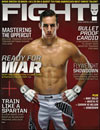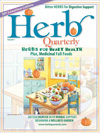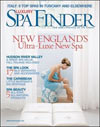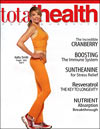Hara quest: The art and energy of Japanese calligraphy
Eri Takase: Art begins when I feel something — when I am moved. The most direct is called “hada de kanjiru” meaning “to experience firsthand” literally this translates to “feel with one's skin” — not with the intellect. My favorite is when I am inspired by motions in nature: An eagle circling on air currents, the flow of wind over the water, the motion of light of the setting sun. Japanese Calligraphy is all about motion — it is a stylized dance with rules of language. And I love it when I feel nature beckoning, “Eri, come dance with me”.
One evening in Florida I was watching a sunset, or more accurately I was watching the motion of the sunset's colored light on the landscape. It was dramatic, bold and beautiful. When the sun had completely set, I sat there, in complete darkness, replaying in my mind what I had seen. The only remaining light was the light I was seeing in my mind — the Japanese word zanshou translates to English as “afterglow” but it literally means “remaining light” or “light that is left over”. My mind made this connection and then the dancing light I was replaying in my head began to dance this word.
This is my dance with a sunset in Florida:
Wind has movement, but it also has a fragrance, it has temperature and taste. So on that cold, overcast day in Washington I was recalling and imagining the wind blowing across Kaneohe Bay. Blowing so bluely. (Wind in Blue, kaze, pictured below.)
I am a strong believer in the idea of “onkochishin” meaning “Respect the Past, Create the New”. And the fundamentals of Japanese Calligraphy are as important to the art as they are to any sport or martial art. Before one can break the rules, one must first know the rules.
I am classically trained in Traditional Japanese Calligraphy. And in traditional calligraphy only certain paper can be used, in fact all the materials are carefully prescribed. The sumi ink must be black — though prized are inks that have very subtle natural colors which come out in the kasure strokes (strokes that look as if the brush is running out of ink). Any color in a traditional work, other than the seal, would immediately disqualify it! Any picture or image would immediately disqualify it.
Not only what cannot be included is prescribed, but also what must be included. For example, in maintaining the concept of wabisabi each work should have nijimi strokes (looks like the ink blotted) and kasure strokes (looks like the brush runs out of ink). How these are done, where these are placed, the relative size of the characters, the font and overall form determine the artistic merit. For example a thicker character should be next to a thinner character (but not always) and done in a way that has overall balance. This also has to be patterned to allow for re–inking the brush which gives natural pause to the work.
To create such a work is quite an undertaking and normally begins with selecting the poem and the materials. For the materials it is key to know the panel who will be judging the competition. They will have a papermaker or paper style they favor, an ink or even a period of the Chinese classics that they are fond of. In the competition several works are rolled out together and the judges select one from the group. This continues until one is judged to be the best — so nothing can be overlooked.
This is a partial translation of the poem: “The gates of Kishu castle stretch half–way to the sky with the white clouds of twilight surrounding the castle base. On the rugged mountain path a lady carrying a jar goes to collect water. The snow from Mt. Hasan is disappearing, filling the rivers whose roar at night fills the castle. Passenger boats are lined in the shade of the trees by the corner rocks, fishermen's drying nets are touched by the clouds. In the fields at the base of the mountain farmers are harvesting, and large dried trees are being burned to make charcoal. The people of the land feed the dogs, capture wild deer, the children create an enclosure of brushwood and chase in pheasants...”
With the paper and length known I would then decide on the font and for this I have selected a cursive font. So I need to go through and decide from all the myriad options which to use for each character. And with this I can do a layout where I will plan the number of lines, where I will re–ink the brush, which characters are naturally thicker and not clump all these together but give a nice distribution to the work. This is like solving a Rubik's cube and so the planning is all important.
Award–winning Calligraphy
© Eri Takase

For this competition the artwork will be 112 characters and measure 20 3/4"W x 89 3/4"H... that is over 7 feet tall! The paper I am using has real gold in it and whose cost adds to the desire to complete the work the first time.
With this particular work I did the design several days before. I had the image in my mind and would practice in my head what I was going to do.
To begin the 7' paper is laid out on the tatami mat on top of a felt shitajiki. I stand over it looking down and map the characters in my mind to the paper. Looking for clues and hints of where I need to be at each point. I keep the image in my mind as I begin grinding the ink. With this large work I will make more than I need and it will take about 40 minutes to get the ink just right. All the while I imagine the work so every part is clear in my mind.
“There is no past, no future only the now and the brush dancing on the paper.”
When the ink is just right I am just right also — once again I stand above the paper and now I literally see completed art before me — as if it is done already.
I am happy with the goat–hair brush I have selected which has the flexibility and size that is perfect for this free cursive font. Once I start the work will be completed with only short pauses to re–ink the brush.
Everything is ready and all that remains is to create the work. To do this takes great energy as one must squat on one knee above the paper and kind of duck walk backwards down the paper as one writes — four times. Breathing is critical as my mind is clear except for the barest thoughts of points to hit. This is called mushin (Free from obstructive thought) — there is no past, no future only the now and the brush dancing on the paper.
When it is done I stand above the work to see the result. It is as I imagined and all that remains is to use a different brush to sign the work and affix my seal. Finally I examine the work vertically and step away. It is just right. I am done. It is then that I feel completely drained. Everything I had in me is there on paper.
In writing this and thinking back to the numerous works and competitions I respect the work and the art that I have done and that many continue to preserve today. It has given me so much, but this is not an art form I would be drawn to create today.
One of my first quotes after moving to the United States was “Japanese Calligraphy is too beautiful a bird to be locked in the cage of a thousand years of tradition.”
And so I began experimenting with new materials and I began to explore — free to create whatever inspired me. First I was infatuated with paper and how ink and different types of paper worked together — going so far as for years I made my own paper! With deep respect and my roots firmly planted in the traditional, I look optimistically to the future of the art.
M: Calligraphy is an art form that shares certain aspects with music. As you have touched upon, unlike a traditional painting it is very much a dance in that within each work it is possible to discern movement through space and time — to see the many rhythms of the calligrapher at work; the movement of the brush strokes, the pauses to apply more ink, the sense of balance in arranging the characters in space. (When appreciating a traditional painting for example, questions such as “Was the hill painted before the river?” are not nearly as relevant.) You have already talked a little about “energy” and “mushin”, but in the context of this dance, can you provide us with a greater sense of the energetic experience; of the role of hara and ki in creating each work?
ET: To me hara represents one thing in two seemingly different forms: The first, hara is the wellspring (minamoto) of spiritual strength — of Ki. The second, hara is the body's center (chuushin) of physical strength — its core. It is not a coincidence that these are located in the same place because these are not different things.

The examples that I immediately think of to illustrate this are the documented cases of parents lifting cars off their children or of a mountain climber flinging off a half–ton rock in a life–threatening accident. In each case Ki was dramatically tapped to achieve what is beyond human ability. The spiritual and the physical are related differently than one might be led to suppose. And the difference is not just raw physical strength — Ki means attuned senses, better concentration and control. If you have ever had a seemingly life/death event where in a split second your mind and being went into overdrive — where in a second you had analyzed, rejected, and come up with a life–saving strategy and your mind and body performed extraordinarily — then you know how it is to focus your Ki — Afterwards you were both exhausted and, despite the danger now passed, you are left feeling a little high.
In calligraphy a pixel width displacement of a character or a fraction of a degree rotation of a line can be the difference between a great work and art that is off. The focus required to do absolutely straight and aligned characters over a seven foot span while duck walking backwards requires a more than normal level of focus and concentration. This level of performance requires Ki.
Focusing one's ki is primal in a sense, but it is not our only tool.
The spiritual and physical have another important link: Visualization. Visualization is as important in Japanese Calligraphy as it is in any sport. Many, many books have been written on applying visualization to everything from marathon running, to improving a golf stroke, to losing weight, to gaining muscle, to even getting what you want from life. And it is extremely effective.

Mental discipline and physical control are absolute musts for the calligrapher. Calligraphy cannot be corrected or changed — there is no adjusting, no rearranging, no touching-up. Calligraphy is often quick and there can be no hesitation, no doubts. One must bring everything to bear for a relatively short but perfect performance where everything matters. Calligraphy is not starting with a large stack of paper and eventually hoping to create something that looks good. I routinely work with paper and scrolls that can be hundreds to thousands of dollars and so I must be able to create work that is consistently of the highest quality — every time. And doing so even when conditions are less than perfect.
I am going to step back for a second to my first point — When I say that hara is the wellspring of Ki, this is not an abstraction — I see and feel it. The area called tanden, just below the belly button is the physical location — though it is “somewhere else” also. Here I actually see a red ball of energy. I say it is located “somewhere else” also because I always see it regardless of where I am looking or whether my eyes are closed or not. Along with seeing it I can feel it — When I place my hands on my abdomen, with concentration, I can feel heat (ki energy) start here and flow to the rest of my body.
Visualization is essential to my art though I learned the most dramatic visualization techniques thanks to math competitions in high school involving manipulations of very large numbers using an “abacus”. In these competitions speed was essential and the simple fact is that the physical fingers on a physical abacus are slow no matter how fast one is. I was first taught to visualize an abacus on the desk in front of me and then manipulate the phantom abacus with my fingers. After a time I really saw an abacus in front of me! The next step was to see and manipulate the abacus without moving — see it in the air and manipulate the image with my mind — think and the image reflects the change — this is much faster. Even today I can pull up this abacus and it floats in front of me like a Windows application.
“As the consistency of the water turns to ink, I call upon the inner energy stored in my tanden to be released.”
I use this same visualization for calligraphy designs. I see and manipulate a design until it is just right. And when I am done with this mental exercise, I see the final design in front of me as if it is already completed.
I have not been trained to use the term “hara” as a mental state per se. I have been taught and use the terms “ki” (inner energy), “mushin” (no mindedness) and “seishintouitsu” (unifying one's spirit). With this background and these terms I think I can answer your question on how I use hara in creating my art.
Calligraphy always starts with grinding of the ink. For large works this can take as much as forty minutes. And this is crucial to the process of creating the art. I start by sitting with correct posture, my stomach is taught. Deep slow breaths. I have already visualized what is to be done — as I grind the ink stick in the pool of pure water in the inkstone, in my mind I go over the motions I will need to create the work and at the same time I systematically let go of extraneous thoughts. There is no outside, my world shrinks to the elements of the task at hand, there is no past and no future. No success, no failure. All but the essentials before me fade away and are gone. My mind is clear of non–essentials in a state called mushin or no–mindedness. The methodical motion of the grinding of the ink continues. There is only the now. And as the consistency of the water turns to ink, I call upon the inner energy stored in my tanden to be released and feel it flow to the rest of the body. My mind again touches on points, key areas of the art that I am going to need to hit. As the water thickens to become ink my attention turns to its consistency — when it is just right it will all be just right.
Years of training and having visualized what to do, all that is left is to do it. I stand over the almost 8 foot gold–laced paper laid out on special shitajiki covering the tatami floor. I see the artwork on the paper before me. I may walk around it — I may view it from a few angles. I may sit feeling the texture of the paper between my thumb and forefinger. The paper is not uniform and I may touch or examine it in detail. This is the paper.
Then it is decided. “Yosh” and I take the brush filling it with ink. I have points in mind but these are now a whisper somewhere. I have a script to follow but this is not writing on air, I have touched the paper and I know it. I make adjustments on the fly, some small, some not so small and I feel the heft of the brush lighten as the paper takes the ink — the resistance changing with decorations and gold inclusions. Somewhere I know why I adjust and that it is right. The ink is near spent at the right moment and I need to re-ink the brush. As I lift the brush towards the inkstone I scoot down noting the next points to hit, re-ink the brush and continue. Each character moving to the next, each action in the now and what it must be.
And the final stroke. I return the brush to the inkstone. It is done. I stand for the first time above the new work. I don't think it, but I know that I need to keep focused as I may have to do it again — something unforeseen might have gone wrong. I go over each stroke and step back and take in the work as a whole. It is just right. It is the art that I had carried in my head for days now and so wanted to create. I select a small fine brush and in the lower left-hand corner write my penname and affix my formal seal.
I step back. I notice I hear sounds again. Outside is a bird chirping. My legs hurt. I feel completely drained — exhausted but a little high — yes, there it is! Everything I had in me is now there on a seven and a half foot gold inlaid sheet of handmade Japanese paper.
In creating this I have kind of duck walked backwards the length of the almost 8 foot high paper four times only resting on one knee to write. Each time not stepping on the paper, not dripping ink, aware of every move. 112 kanji characters in four columns.
About Eri Takase
Born in Osaka, Japan, Eri Takase now lives in Hawaii with her husband where she has her own studio creating custom Japanese Calligraphy designs. From the age of six she has trained in traditional Japanese calligraphy and in 1989 was awarded the rank of shihan (Master) by the Bokuteki–kai and Bunka–shodo (www.bunkashodo.co.jp).
More information about Takase Studios can be found on her website at www.takase.com.
The Reiki Digest and California Reiki gratefully acknowledge the work of Tim Jackowski who acted as interpreter and translator for this article.






































0 Comments:
Post a Comment
<< Home